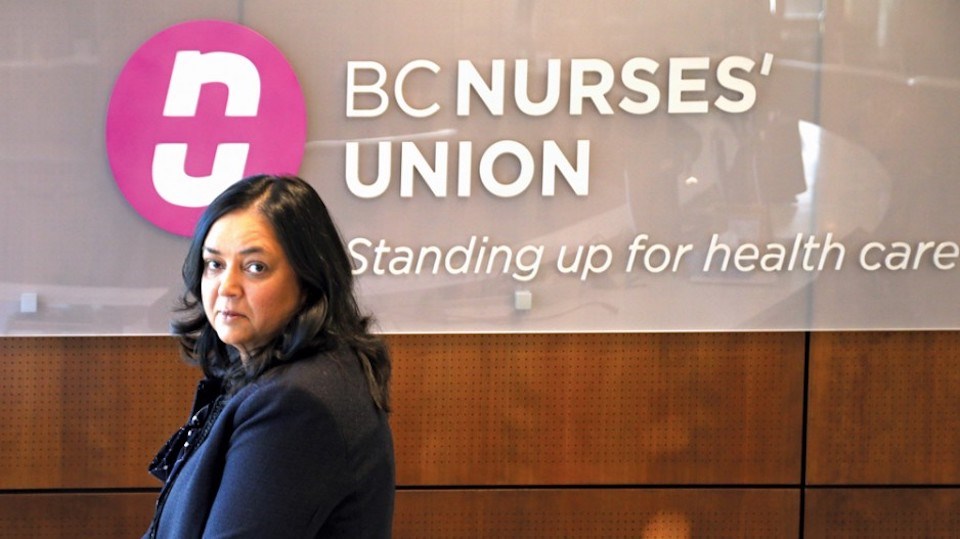Soaring COVID-19 hospitalizations in January prompted the B.C. government to lay out its strategy to prepare for overwhelmed hospitals, and made clear how badly the province needs more health-care workers.
Health Minister Adrian Dix said the government could convert space at the Â鶹´«Ă˝Ół»Convention Centre previously used to vaccinate residents, and create what he called a “field hospital.”
He added this facility would be of little use without healthy and trained nurses and doctors to care for patients.
“It’s not the beds or the space,” he said. “It’s the people that is the most significant thing.”
Indeed, B.C.’s health-care system needed more doctors, nurses, paramedics and other personnel long before the pandemic descended, industry insiders told BIV.
The Omicron wave of COVID-19 infections accentuated the problem, prompting more than 11 per cent of B.C.’s 188,000 health-care workers to call in sick in early January, Dix said.
Absenteeism was nearly double what it was for that part of January, compared with January 2020, he added.
The sick workers included many of B.C.’s more than 14,000 doctors, and nearly 63,000 nurses.
Adding more health-care workers in B.C. is a challenging task because the shortages have many causes. It is not simply a matter of pumping more money into medical schools and nursing programs.
“We keep losing doctors due to the difficult conditions they often find themselves working in,” said Ramneek Dosanjh, president of the doctors’ advocacy organization Doctors of BC. “Issues range from extremely long hours that extend into unpaid evening hours for completing paperwork and forms, such as insurance, WorkSafeBC.”
She added that doctors endure rising costs to run their businesses. One sticking point is how doctors are paid.
“For many family doctors, the established fee-for-service model works really well, but for others that’s not the case,” she said.
Doctors of BC is also urging the province’s Ministry of Health to allow virtual care to become a permanent option for doctors, alongside in-person appointments.
The aging population means more doctors, nurses and others are retiring. Younger workers can suffer burnout because they are overworked, and leave after a few years on the job, BC Nurses’ Union president Aman Grewal told BIV.
In many cases, working conditions include not having access to protective gear, such as N95 masks, or being redeployed to different workplaces with little notice, Grewal said.
That, she added, can diminish job satisfaction to the point where some nurses quit.
Full-time registered nurses in B.C. make between $70,656 and $92,784 per year, which is in line with other provinces, according to the union’s contract that expires March 31.
Integrating foreign-trained nurses is another problem, as they have to endure what Grewal called “a lengthy and arduous process.”
Internationally trained nurses must contact the Toronto-based National Nursing Assessment Service (NNAS), send in a bevy of notarized documents and have that organization contact their schools to verify their education, among other details.
The process takes up to a year and can include a range of fees that push the total cost into the thousands of dollars.
Aspiring B.C. nurses then ask NNAS to send their applications to various provincial nursing colleges across Canada, such as this province’s BC College of Nurses and Midwives (BCCNM).
The BCCNM then requires applicants to pay more fees, and pass tests for language proficiency and skills, Grewal said.
She added that a simpler process would be to deal with the BCCNM from start to finish.
“The longer that [internationally trained nurses] remain out of the profession, the more difficult it becomes for them to transition back,” she said.
BCCNM CEO Cynthia Johansen told BIV that two pilot projects are aimed at speeding up the assessment process to help internationally trained nurses enter the B.C. workforce in appropriate nursing roles.
One of those pilot projects enables nurses to complete competency assessments for three designations simultaneously.
Before 2018, B.C. had three colleges that licensed nurses. Those colleges have since amalgamated, and Johansen said this means processes are more streamlined.
“We also recognize the need for more nurses and are working closely with our partners to remove barriers,” she said.
Grewal has lobbied government to provide more funding to nursing programs across the province.
Demand for seats in nursing schools is strong, and it is the provincial government that sets the quota for how many students schools can admit.
The University of British Columbia’s (UBC) School of Nursing, for example, last year had 860 applicants seeking the school’s 129 registered-nurse seats, director Elizabeth Saewyc told BIV.
UBC’s nursing school also annually accepts about 40 students to its master’s degree program, about 30 to its nurse practitioner program, about 35 to its nurse-educator and long-term-care home manager program, and between seven to 10 students to its PhD program, Saewyc said.
Additional government funding means that UBC can accept 150 registered nursing students in September – 8.5 per cent more than last year.
Provincewide, about 1,300 registered nursing students graduate annually from nearly 20 nursing schools.
Even if more government funding were available, a limited supply of instructors would remain a barrier to training nurses. Nursing programs also require placements in clinical settings in hospitals, and there is a limit to how many student nurses can be in hospital wards at the same time, Saewyc said. •



